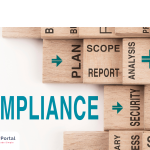The role of compliance has always been about balancing risk, oversight and operational efficiency and with the increasing demands placed on regulated firms, the pressure to “do more with less” has never been greater. Enter artificial intelligence (AI).
In our view, AI is not here to replace compliance teams but to enhance them. The right tools can help compliance teams reduce manual workloads, respond more quickly to red flags and make better use of existing data, all without losing control or transparency.
But what does that look like in practice?
The Growing Case for AI in Compliance
Regulators, including the FCA, have acknowledged the potential of AI but also made it clear: innovation must be responsible. Firms must remain accountable, ensure auditability and be able to explain how AI-supported decisions are made.
When used thoughtfully, AI can offer very real benefits across the compliance lifecycle, from onboarding and ongoing monitoring, to risk assessment and reporting.
Here are just a few areas where AI is making a difference:
- Document Analysis and Data Extraction
AI can help compliance teams process large volumes of regulatory guidance, internal documentation and client-submitted data. It can extract key information, flag inconsistencies and surface terms that may require deeper review, all in a fraction of the time of a manual process.
This is especially useful for onboarding packs, financial promotions and policy updates.
- Smart Task Automation
Routine admin is one of the biggest drains on compliance resources. AI-powered workflow tools, such as those integrated in ComplyPortal, can trigger automated reminders, update task statuses and link records with related policies or risk registers without manual input.
This reduces the risk of delays and keeps everyone aligned with internal deadlines and regulatory requirements.
- Risk Heat Mapping and Dynamic Scoring
When layered with AI, risk heat maps become even more powerful. Tools can now suggest adjustments to risk levels based on real-time inputs and automatically surface emerging trends or anomalies. This helps teams proactively manage their risk universe rather than reacting to issues after the fact.
- Enhanced Monitoring and Alerts
Ongoing monitoring has always been a challenge, especially with limited resources. AI models can be trained to spot patterns in behaviour or data that might indicate elevated risk or non-compliance. They can also help prioritise alerts, so compliance teams are not buried in false positives.
- Natural Language Interfaces
With tools like ViCA, our Virtual Compliance Assistant, firms can now ask compliance-related questions and receive structured, explainable answers, all based on FCA guidance, internal policy libraries and current regulations.
For junior staff in particular, this support can speed up decisions and reduce uncertainty when interpreting complex rules.
Striking the Right Balance
It is important to remember that AI is a tool, not a solution. Its effectiveness depends on how it is deployed, integrated and overseen. The key to success lies in:
- Maintaining human oversight
- Keeping clear audit trails
- Choosing tools that support (not obscure) governance
- Prioritising explainability and regulatory alignment
The ComplyPortal Approach
At ComplyPortal, we are continuously developing features that leverage AI responsibly to make life easier for compliance teams, without compromising control.
Our features include automated workflows, intelligent document review, virtual assistants and enhanced risk monitoring — all designed by compliance professionals, for compliance professionals.
If your team is exploring how to incorporate AI into your compliance function, our experts are here to help.
Want to see AI in action?
👉 Book a short demo and discover how ComplyPortal can help your firm boost efficiency, reduce manual workload and stay ahead of regulatory expectations.
Related Posts
-
What is compliance monitoring?
What is compliance monitoring?The DefinitionCompliance monitoring is the ongoing process of systematically reviewing and assessing an organisation’s adherence to regulatory…
-
AI Tools in Compliance: What is Possible Now?
Artificial intelligence (AI) is no longer a concept on the horizon; it is here, and it is rapidly becoming part…
-
Why Compliance Fatigue Is Costing Firms More Than They Realise
The Financial Conduct Authority (FCA) in the UK has placed significant emphasis on the fair treatment of vulnerable customers, as…




